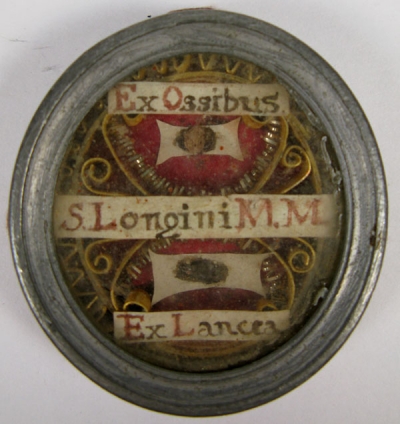The Holy Spear is also known as the Holy Lance is the name of the very spear that had pierced Christ’s side when he hanged on the cross. The first person to refer this as the Holy Spear was pilgrim Antoninus of Piacenza in 570 AD. While describing the holy places of Jerusalem, he said that in the Basilica of Mount Zion, there was the crown of thorns which Our Lord was crowned and the spear which was used to strike Him in the side. It was rediscovered by the European army of the First Crusade in the city of Antioch on June 15th, 1098, but eventually ended up in the treasury of Constantinople. It is documented, that the holy relic of the True Lance passed though Ancona (an Italian city on the Adriatic side of the Peninsula), in 1492 on its way from Bayezid II the Turkish Sultan (whose father obtainied it in 1451 during the conquest of Constantinople) to Pope Innocent VIII by the hand of Pierre d'Abusson, Grand Master of the knights of Rhodes. The Pope placed it the Treasury of the old St. Peter's Basilica in Rome with the volto santo where it is held in great veneration. It is now in one of great piers of the present St. Peter's Cathedral and in front of it, over the image of Longinus is inscribed "The Spear of Longinus, which Innocent VIII, the Chief Pointif received from Bayezid Sultan of the Turks; Urban VIII transferred it to a decorated shrinerasing an image and erecting the shrine beneath." (see for more information: Relics from the Crucifixion: Where They Went and How They Got There. By J. Charles Wall.
Oval glass-fronted silvered pewter reliquary theca housing first-class ex ossibus (from the bone) relics of Saint Longinus the Centurion and relic of the Holy Lance. The relics are affixed to a multi-color silk background, surrounded by gilt paperoles and twisted silver wire ornamentation and identified on a paper cedula label as Ex Ossibus / S. Longinis M.M. / ex Lancea (from the bone of Saint Longinus, Military Martyr / From the [Holy] Lance). On the back, the theca is protected by a seal of red wax with a perfectly preserved imprint of a coat of arms of Fr. Giovanni Luca Solari (†1810), Bishop of Brugnato, Italy (p. 1792-1810).
Additional Info
- ID#: 146-RSCR-7
- Size: 46 x 44 mm
- Age: ca. 18th century, Italy
- Materials: pewter
- Price: SOLD!
-

Additional Images of this Item
https://www.russianstore.com/en/online-store/catholic-reliquaries/item/1233-theca-with-relics-of-saint-longinus-and-of-the-holy-lance-spear-of-destiny#sigProId4b49dee8c2
Online Store & Services
Information
Quick Link
Information
Quick Link
SAVE 5% from your first purchase when you subscribe to receive our infrequent mailings with updates on new arrivals, exclusive offers, and fascinating stories on relevant subjects.








 Поменять язык на русский
Поменять язык на русский 